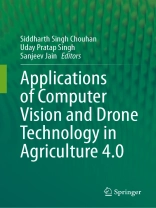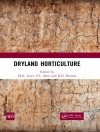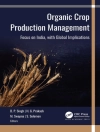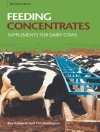This edited book focus on two most emerging areas and covers the different aspects of computer vision and drone technology in the field of agriculture. It comprises various applications including segmentation/classification of plant diseases, monitoring of crops, grade/quality estimation of fruits/flowers/vegetables/crops, surveillance, soil deficiency estimation, crop/plant growth estimation, canopy measurement, water stress management, vegetation indices calculation, weed detection, and spraying, among other. It has 17 chapters contributed by experts in the field of computer vision, drone technology, deep learning, machine learning, artificial intelligence, image processing, agriculturist, and plant pathologists.
The recent development of high-end computing devices and the adaptation of unmanned aerial vehicles has provided a mechanism to automate traditional agriculture practices. The on-field or aerial images captured using cameras are processed with the help of intelligent algorithms, and an assessment is drawn for further recommendations. This practice is efficient in provisioning an accurate, timely, and economical decision-making system to overcome the problems of agricultural field experts and farmers. This process is advantageous in increasing the quality and quantity of crop yields.
This book serves as an excellent guide to students, researchers, scientists, and field experts in directing their work toward this domain and developing/designing models. Further, this book is useful for pathologists, biotechnologists, seed production specialists, breeders, market managers, and other stakeholders associated with underlying technology or market development from the public and private sectors.
Tabela de Conteúdo
Chapter 1 – Introduction to Computer Vison and Drone Technology.- Chapter 2 – Digital Insights into Plant Health: Exploring Vegetation Indices through Computer Vision.- Chapter 3 – Computer Vision and Agricultural Robotics for Disease Control.- Chapter 4 – Automated system for comprehensive plant disease analysis.- Chapter 5 – Computer Vision-Based Smart Monitoring and Control System for Crop.- Chapter 6- Implementations and Rationale for Blockchain Technique in Agriculture.- Chapter 7 – Leaf Net – Design and Evaluation of a Deep CNN Model for Recognition of Plant Leaves, Chapter 8 – Harnessing Computer Vision for Agricultural Transformation: Insights, Techniques, and Applications.- Chapter 9 – Different vegetation indices measurement using computer vision.- Chapter 10 – Disease Control Measures Using Vision Enabled Agricultural Robotics.- Chapter 11 – Assessing the Quantity of a Crop Field Using Aerial Images.- Chapter 12 – Drone Based Intelligent Spraying of Pesticides: Current Challenges and its Future Prospects.- Chapter 13 – Drone spraying system for efficient agrochemical application in precision agriculture.- Chapter 14 – Efficient Patch-wise Crop Detection Algorithm for UAV-generated Orthomosaic.- Chapter 15 – Economic Evaluation of UAV-Based Soil Sampling Approaches.- Chapter 16 – Ariel Green Vision using Quad copter Pesticide Sprayer Drones – A Third Eye for Farmers.- Chapter 17 – Revolutionizing Agriculture: The Application of Computer Vision and Drone Technology.
Sobre o autor
Dr. SIDDHARTH SINGH CHOUHAN currently working as an assistant professor in School of Computing Science and Engineering, VIT Bhopal University, Kothri-Kalan, Sehore, 466114, Madhya Pradesh, India. He has completed Ph D in Computer Science and Engineering from Shri Mata Vaishno Devi University Katra, 182320, UT of Jammu and Kashmir, India. He is a postdoctorate from the University of Malta, Europe. He has received a BTech degree in 2010 and an MTech degree in 2013 in Computer Science and Engineering from RGPV University, Bhopal, India. His area of research interest includes soft computing, computer vision, drone technology, deep learning, and precision agriculture. He has authored several research papers published in conferences and journals of international repute.
Dr. UDAY PRATAP SINGH presently working as an associate professor in Department of Mathematics, Central University of Jammu, 181143, Jammu, India. He has obtained BSc and MSc (Mathematics and Statistics) Degree from Dr. R.M.L. Awadh University, Faizabad (UP), India; MSc (Mathematics and Computing) Degree from Indian Institute of Technology, Guwahati, India; and received Ph D in Computer Science from Barkatullah University, Bhopal. His area of interest includes soft computing, nonlinear systems, and image processing. He had authored several research papers published in the many reputed journals and conferences. He is a life member of Soft Computing Research Society (SCRC), Barata Ganita Parishad, Computer Society of India, and Member of IEEE and AMS.
Prof. SANJEEV JAIN currently working as a vice chancellor of the Central University of Jammu. He received a Master’s degree in Computer Science and Engineering from IIT Delhi, New Delhi, India, in 1992, and a Ph D degree in Computer Science and Engineering. He has over 35 years of experience in teaching, research, and administration. He has the credit of making a significant contribution to research and developmentin the area of image processing, soft computing, Io T, and mobile ad-hoc network. He had authored several research papers published in the reputed journals and conferences. He has undertaken a number of major research and development projects sponsored by the Government and Private Agencies. He is a member of various societies like the Computer Society of India and IEEE.












